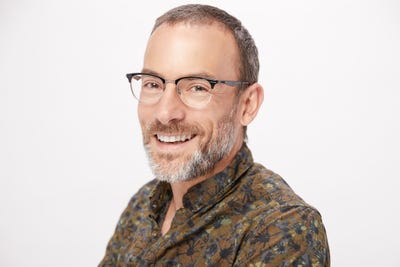Rivalz brings nutritious, low-sodium snacks to the salty category
Food industry veterans created a “good-for-you” treat that satisfies consumers’ cravings without costing a fortune. Find out how it came to be.
December 5, 2023

Rivalz CEO Peter Barrick is on a mission to tackle the world’s toughest health problems, such as malnutrition, diabetes, obesity and insulin resistance.
And he has a secret weapon: salty snacks.
“We have the technology today and the ability to innovate where we can use healthy ingredients and still create that delicious, indulgent texture and flavor of an unhealthy snack,” Barrick said. “There are no more excuses for Frito-Lay to make delicious, unhealthy snacks. The irreparable harm that they're doing globally with their snacks and propagating a 50-year pandemic…it's time to change.”

The CPG start-up is the brainchild of food industry veterans Ralph Jerome and Harold Schmitz. Their vision was to use cutting-edge technology to create not a “better for you” snack, but rather a “good for you” snack that still satisfies even the most jaded junk-food junkie’s cravings while still being affordable. To helm this undertaking, the pair gave Barrick a call. “We got together, shared ideas, and that’s how Rivalz was born.”
The company currently offers three flavors of stuffed snacks, each featuring eight grams of protein and four grams of fiber per serving, all while tasting like a salty snack should taste. As Barrick explained it, “We can take the existing snack paradigm and turn it upside down.”
Everyone always refers to “better for you” snacks, but you’re saying you can do better than better for you. You’re aiming for flat-out “good for you.”
Peter Barrick: Yeah. High protein, high fiber, low sodium and low carbohydrate. Our idea is to create a highly efficient caloric snack, where every calorie counts. But we also want to focus on micronutrients to solve the malnutrition problem. It's a very, very large task, but we figured out how to do it. We're the first snack that is actually functional and great tasting, the next logical step in the salty snack category.
And how did you do that? Are you using AI?
PB: A lot of our competitors are using AI on fringe problems. We're using AI to solve the category's hardest problems, problems that make salty snacks terrible. We're going after nutrition. We're going after flavor. We're not using stock AI to figure out what the cabbage and pineapple taste like. We're solving hard, hard problems.
For example, we're the first movers on AI and extrusion. Extrusion is a trillion-dollar industry worldwide. Rivalz has figured out how to extrude hard-to-work ingredients and maintain the same indulgent texture and flavor as a high-carbohydrate, unhealthy snack.
Since the 1930s, extrusion engineers use trial and error. The problem with that is that there are literally 500,000 plus experiments that you can run to try to get to that ultimate aim. It takes tons of time, money and effort in order to get to that desired end state. There's a reason why it takes three to five years to launch a product into the market.
With AI, especially on the extrusion side, we've sped that up so we're able to rapidly reduce the amount of iterations that we need to do.

Rivalz has figured out how to extrude hard-to-work ingredients and maintain the same indulgent texture and flavor as a high-carbohydrate, unhealthy snack, CEO Peter Barrick says.
The general perception is that extrusion—forcing soft materials through perforated plates or die opening so you can shape the food a certain way—makes for unhealthy, highly-processed foods.
PB: There is a reason why companies use cheap high carbohydrate ingredients that aren't healthy for you—they’re easier to extrude. But that leads to major health problems when you put out a product that has zero nutritional value. It’s an incredibly hard problem to solve: how do you keep the indulgent texture and flavor, but also provide something that's nutritious?
Our extrusion—through published research studies—actually improves protein digestibility, which is outrageous. We're trying to change definitions of buzzwords out there that people think are negative.
Maybe I’m being naive, but how can a computer tell you if something tastes good?
PB: There are sensory profiles that they can use; it's all about data sets. If you have a great AI partner with the required historical data sets, they can identify potential ingredients to use to achieve a sensory profile that you would like—or you can create your own data sets.
But just because you have a modulated solution, you still have to test it and trial it. Those ingredients that you put into the recipe will also affect the nutritional outcomes as well. It's a multidimensional problem. You have sensory and nutritional outcomes, you have processing parameters, you have ingredients themselves that behave differently under stress. It's a hugely complex problem and that's why it takes so long, but it’s rapidly sped up by AI and our R&D process.
The cool thing about startups is that we disrupt, we figure out the big problems, we validate that there is a market, and we grow. That's what Rivalz is doing.
Read more about:
InnovationAbout the Author(s)
You May Also Like




